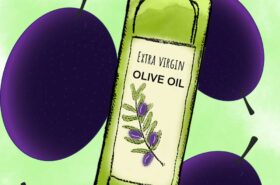Hello my little cheese lovers! The time for good quality cheese content has arrived, today with our cute Pecorino cheese! You’ll learn what is Pecorino cheese, its production and meaning in todays kitchen culture! And of course, there will be a wine pairing, because why not?
Where does Pecorino come from?
Now that we gathered around our cheese shrine, lets take out the Pecorino! Pecorino is a really old (traditional) cheese which originated in Italy (somewhere around Lazio). It’s as old as the Romans, and as you know, we need to always “do as the Romans do”, and believe us, they ate their Pecorino! The first historical findings of Pecorino production are around 2000 years old (see, tradition right there!).
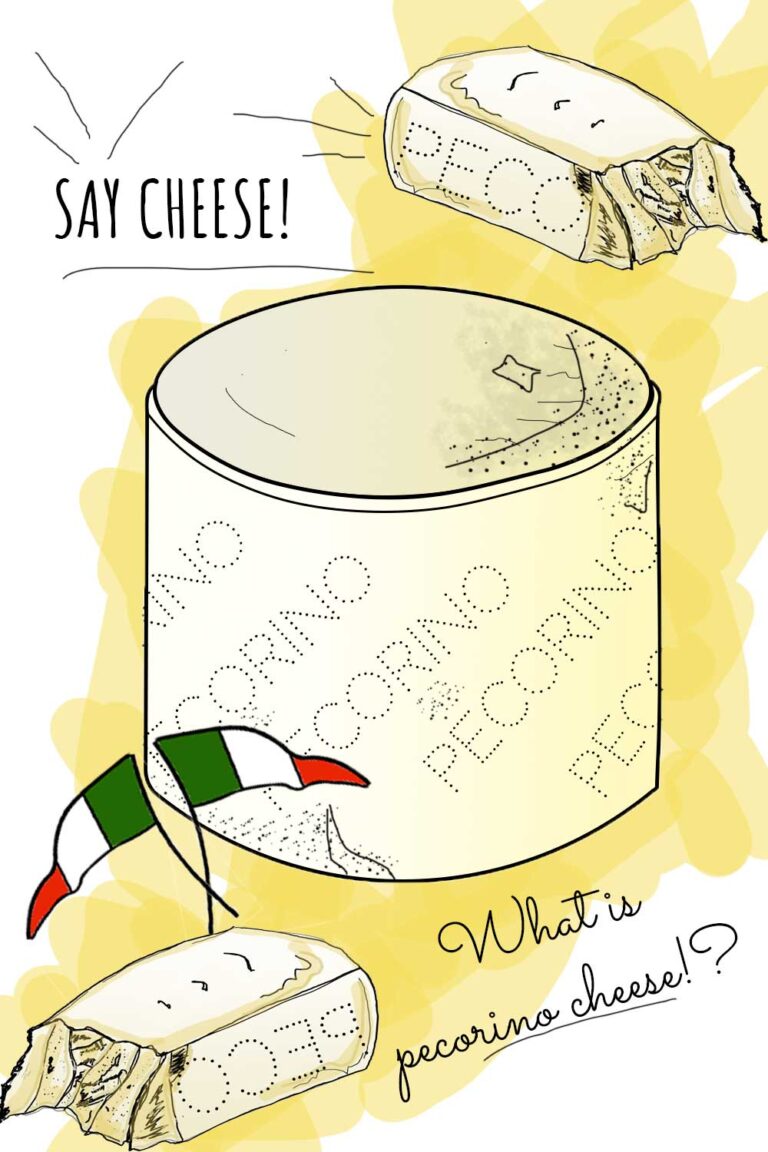
What is Pecorino cheese?
Pecorino is mainly extra hard and very salty sheep’s cheese used for grating, even the word “Pecora” simply means “sheep” in Italian (si, si, amore mio), therefore it isn’t really hard to guess the word origin of Pecorino cheese. The main importance of this cheese is its intense salt level and great grating properties, add to this mixture the specific sharp taste and aroma of Pecorino and you get one of the most important cheeses of the world!
What are the main pecorino styles?
The most known pecorino styles around Italy are as follows: Pecorino Romano, Pecorino Sardo, Pecorino Toscano and Pecorino Siciliano. The most abundant and well known is of course the Romano. Pecorino Romano is a Protected Designation of Origin (PDO) cheese that may be produced only in the Italian regions of Lazio, Sardinia and Tuscany. Pecorino Toscano is a hard sheep’s milk cheese that is milder and less salty than Pecorino Romano, and mostly consumed younger as a classic table cheese (fancy term right there). Pecorino Sardo is made on the island of Sardinia, it’s less salty yet has a richer flavor than Pecorino Romano! Pecorino Siciliano is a firm sheep’s milk cheese made on the Italian island of Sicily, it’s less salty than Romano, but can be aged anything between a few months and a few years (you get it).
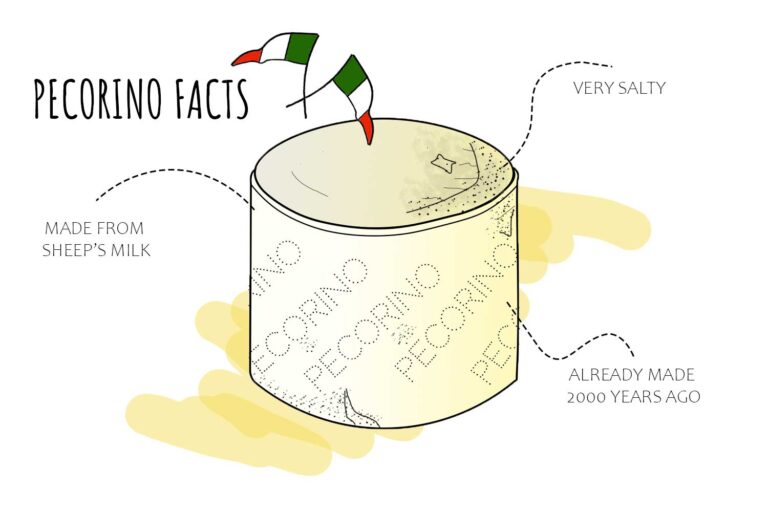
What is the taste and aroma of Pecorino cheese?
The aroma of Pecorino cheese is very fragrant! If you already tried sheep or goat milk, you already know that it’s a little more aromatic than regular cow’s milk – so is the cheese! In addition, the specific aroma compounds of Pecorino form in large quantities with cheese aging (affinage). Therefore, fresh Pecorino cheese has somewhat lighter aroma, like fresh hay, while aged Pecorino becomes concentrated and very, very fragrant!
The taste of fresh Pecorino cheese is less salty, and little more acidic (the acid is somewhat broken down in the aging process of Pecorino). Typically, Pecorino Romano, is one of the saltiest cheeses there is, but also very complex in flavor, which makes him one of the best grating cheeses in the world.
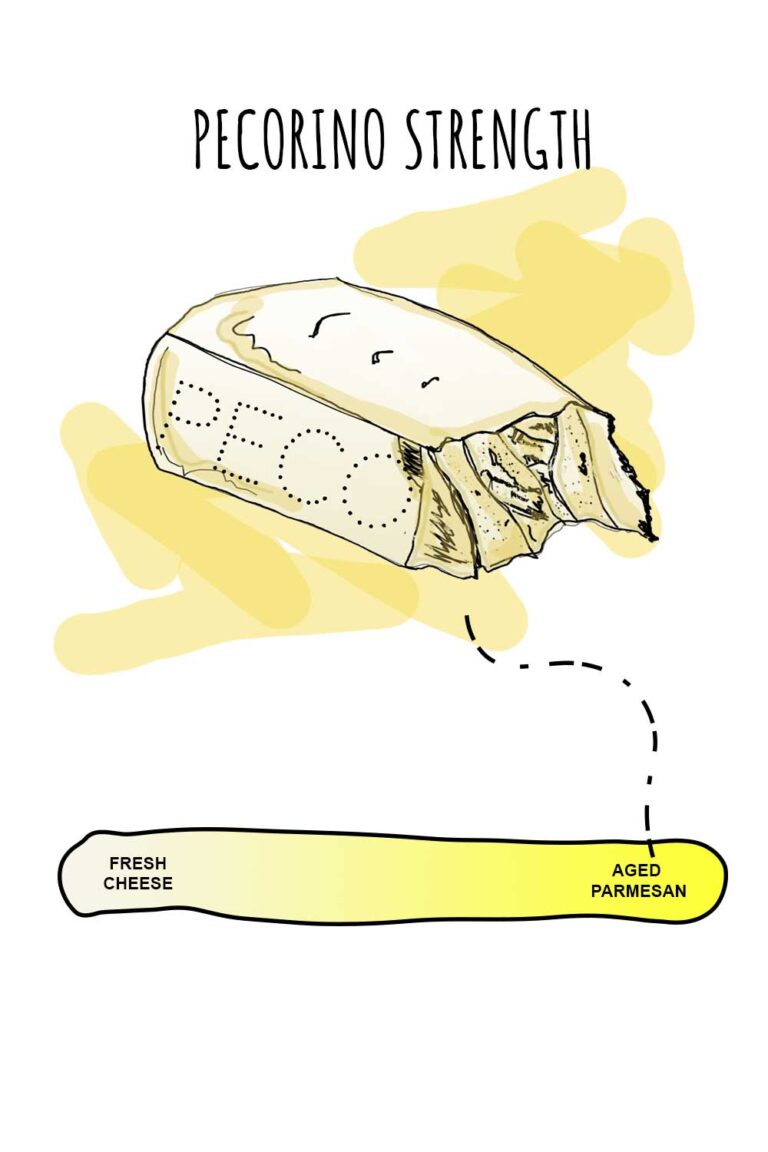
How is Pecorino made?
Traditionally the cheese was made in the villages and countryside around Rome. The fresh and unpasteurized sheep’s milk was heated to higher temperatures and lamb rennet was added. The coagulation process is initiated and now the most important part of pecorino cheesemaking takes place – high temperature curd acidification. The temperature of the fresh curd needs to be somewhere between 45°C and 48°C (113°F and 118°F) to get the specific pecorino texture. Also, the curd needs to be really small in size to get the Pecorino look! Afterwards the fresh curds are pressed into wheel shaped molds (traditionally by hand). The trick with Pecorino is that it’s still salt-rubbed by hand. To do that you take your fresh Pecorino cheese and literally rub it with as much salt as you can get (that’s why Pecorino Romano is considered one of the saltiest cheeses of the world). The magic, as always, happens afterwards in dark and damp places, where the Pecorino ages for a few months (but mostly a year).
Pecorino aging
The aging of Pecorino is very important, because often it deepens the flavor and concentrates the aroma, especially in the Romano type. Romano is aged at 10-12 °C for at least 12 months! Before the aging begins, the cheese is thoroughly salted and sealed (so the salt can really penetrate deep into the cheese). On the other side, Pecorino Toscano and Siciliano can often be found with just a little aging time, around 3-4 months, which make them really fresh and easy cheeses, contrary to the Romano.
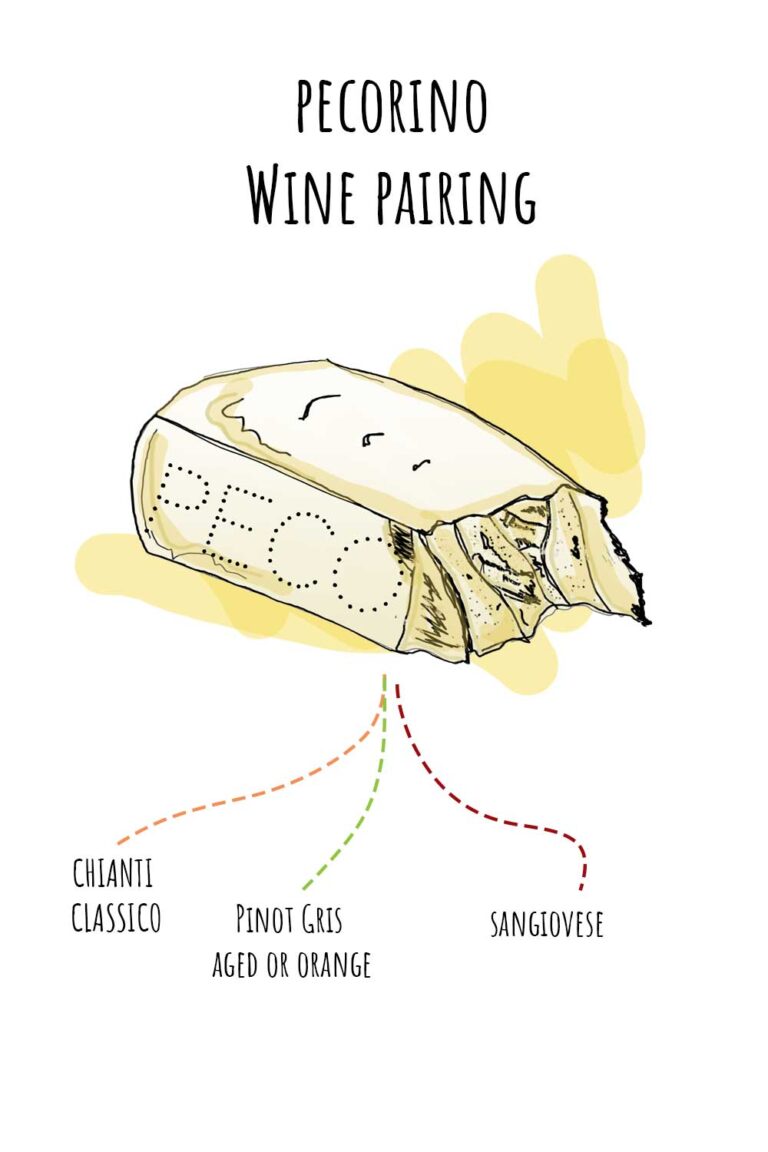
Pecorino wine pairing
Pecorino comes from the surroundings of Rome and is therefore very well suited for pairing with indigenous grape varieties as Sangiovese or basic Chianti Classico. The strong flavor of Pecorino suites these strong red wines in character and style. If you prefer white wines, go for aged or orange, Pinot Grigio, with high extract and character!
That’s it for today my little cheese friend, but don’t be sorry, much more will come! As always you can share your cheese (facts) or keep it for yourself, you decide! We love you either way, just remember to say cheese (every now and then)!

